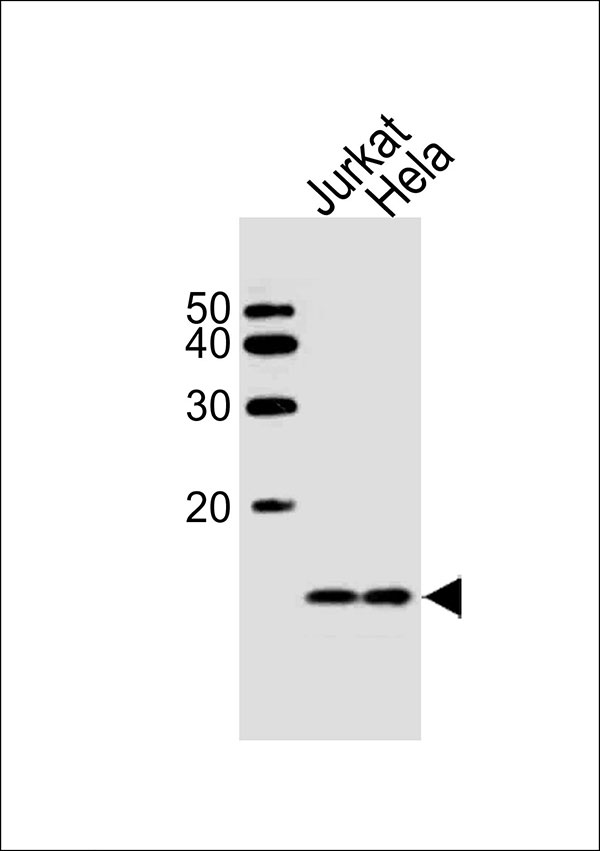B2M Antibody
Mouse Monoclonal Antibody (Mab)
- 产品详情
- 实验流程
- 背景知识
Application
| WB |
|---|---|
| Primary Accession | P61769 |
| Other Accession | NP_004039.1 |
| Reactivity | Mouse, Rat, Human |
| Host | Mouse |
| Clonality | Monoclonal |
| Calculated MW | 13715 Da |
| Isotype | IgG1 |
| Antigen Source | HUMAN |
| Gene ID | 567 |
|---|---|
| Antigen Region | 10-39 aa |
| Other Names | B2M; Beta-2-microglobulin; Beta-2-microglobulin form pI 5.3 |
| Dilution | WB~~1:1000 |
| Target/Specificity | This B2M antibody is generated from mice immunized with a KLH conjugated synthetic peptide between 10-39 amino acids from human B2M. |
| Format | Purified polyclonal antibody supplied in PBS with 0.09% (W/V) sodium azide. This antibody is prepared by Saturated Ammonium Sulfate (SAS) precipitation followed by dialysis against PBS. |
| Storage | Maintain refrigerated at 2-8°C for up to 2 weeks. For long term storage store at -20°C in small aliquots to prevent freeze-thaw cycles. |
| Precautions | B2M Antibody is for research use only and not for use in diagnostic or therapeutic procedures. |
| Name | B2M (HGNC:914) |
|---|---|
| Function | Component of the class I major histocompatibility complex (MHC). Involved in the presentation of peptide antigens to the immune system. Exogenously applied M.tuberculosis EsxA or EsxA-EsxB (or EsxA expressed in host) binds B2M and decreases its export to the cell surface (total protein levels do not change), probably leading to defects in class I antigen presentation (PubMed:25356553). |
| Cellular Location | Secreted. Cell surface. Note=Detected in serum and urine (PubMed:1336137, PubMed:7554280). {ECO:0000269|PubMed:7554280, ECO:0000269|Ref.6} |
For Research Use Only. Not For Use In Diagnostic Procedures.
Provided below are standard protocols that you may find useful for product applications.
BACKGROUND
This gene encodes a serum protein found in association with the major histocompatibility complex (MHC) class I heavy chain on the surface of nearly all nucleated cells. The protein has a predominantly beta-pleated sheet structure that can form amyloid fibrils in some pathological conditions. A mutation in this gene has been shown to result in hypercatabolic hypoproteinemia.
REFERENCES
Bailey, S.D., et al. Diabetes Care 33(10):2250-2253(2010)
Rennella, E., et al. J. Mol. Biol. 401(2):286-297(2010)
Debelouchina, G.T., et al. J. Am. Chem. Soc. 132(30):10414-10423(2010)
Mumtaz, A., et al. Saudi J Kidney Dis Transpl 21(4):701-706(2010)
Guo, H.C., et al. Nature 360(6402):364-366(1992)
终于等到您。ABCEPTA(百远生物)抗体产品。
点击下方“我要评价 ”按钮提交您的反馈信息,您的反馈和评价是我们最宝贵的财富之一,
我们将在1-3个工作日内处理您的反馈信息。
如有疑问,联系:0512-88856768 tech-china@abcepta.com.























 癌症的基本特征包括细胞增殖、血管生成、迁移、凋亡逃避机制和细胞永生等。找到癌症发生过程中这些通路的关键标记物和对应的抗体用于检测至关重要。
癌症的基本特征包括细胞增殖、血管生成、迁移、凋亡逃避机制和细胞永生等。找到癌症发生过程中这些通路的关键标记物和对应的抗体用于检测至关重要。 为您推荐一个泛素化位点预测神器——泛素化分析工具,可以为您的蛋白的泛素化位点作出预测和评分。
为您推荐一个泛素化位点预测神器——泛素化分析工具,可以为您的蛋白的泛素化位点作出预测和评分。 细胞自噬受体图形绘图工具为你的蛋白的细胞受体结合位点作出预测和评分,识别结合到自噬通路中的蛋白是非常重要的,便于让我们理解自噬在正常生理、病理过程中的作用,如发育、细胞分化、神经退化性疾病、压力条件下、感染和癌症。
细胞自噬受体图形绘图工具为你的蛋白的细胞受体结合位点作出预测和评分,识别结合到自噬通路中的蛋白是非常重要的,便于让我们理解自噬在正常生理、病理过程中的作用,如发育、细胞分化、神经退化性疾病、压力条件下、感染和癌症。






